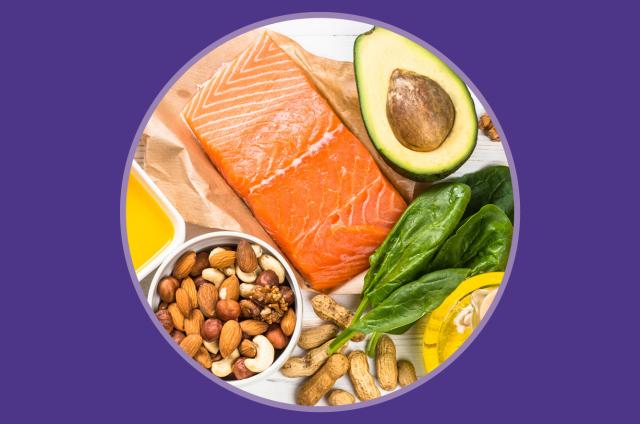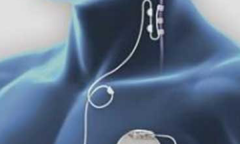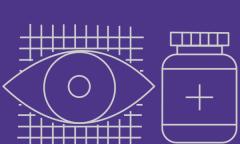The ketogenic diet may help reduce seizures and have other positive effects. Dietary treatments for epilepsy are specialised, and need to be supervised by trained medical specialists.
What is the ketogenic diet?
The ketogenic diet is a very high fat, very low carbohydrate, controlled protein diet that has been used since the 1920s to treat epilepsy.
The diet is a medical treatment, and is usually only considered when at least two suitable medications have been tried and not worked. The ketogenic diet is an established treatment option for children with hard to control epilepsy. However, adults may also benefit from dietary treatments.
Dietary treatments for epilepsy must only be followed with the support of an experienced epilepsy specialist and dietitian (food specialist).
How does the diet work?
Usually the body uses glucose (a form of sugar) from carbohydrates, found in foods like sugar, bread or pasta, for its energy source. Chemicals called ketones are made when the body uses fat for energy - this is called ketosis. With the ketogenic diet, the body mostly uses ketones instead of glucose for its energy source.
It is not clear exactly how the diet helps reduce seizures in some people. Research has shown that a particular fatty acid called decanoic acid, may be involved in the way the diet works.
Who is the diet suitable for?
The diet may not work for everyone but it is suitable for many different seizure types and epilepsy syndromes.
If you, or your child, has severe feeding problems, or has a condition where a high fat diet would cause problems, the diet may not be suitable.
The ketogenic diet can be adapted to diets from all different cultures, as well as for people with allergies or those on modified texture diets. The dietitian will calculate the diet and try to include foods you or your child likes. The diet can be used in children and adults of any age, although infants need close monitoring.
What sort of food is eaten on the diet?
There are different forms of the ketogenic diet. The types of foods eaten and how each diet is calculated are slightly different, but all forms have shown effectiveness, in randomised controlled trials, in reducing seizures for some people.
Classical ketogenic diet
In this diet, most of the fat comes from cream, butter, oil, and other naturally fatty foods. The classical diet includes very little carbohydrate and protein. Each meal includes a strictly measured ratio of fat to carbohydrate and protein.
Medium chain triglyceride (MCT) ketogenic diet
MCTs are certain types of fat. This diet allows for more carbohydrates, so may offer more variety. It includes some fat from naturally fatty foods, as well as some fat from a supplement of MCT oil or emulsion. This can be mixed into food or milk and is only available on prescription. Unlike the classical diet’s strict ratio of fats to carbohydrate and protein, the MCT diet is calculated by the percentage of energy (calories) provided by these particular types of fat.
The following types of ketogenic diets are more flexible, and may suit older children, adolescents, or adults.
Modified Atkins diet and modified ketogenic diet
The Modified Atkins diet and modified ketogenic diet (sometimes called ‘modified ketogenic therapy’) use a high proportion of fats and a strict control of carbohydrates. These are often considered more flexible than the classical or MCT ketogenic diets, as more protein can be eaten, and approximate portion sizes may be used in place of weighed recipes.
Low glycaemic index treatment (LGIT)
This diet focuses on how carbohydrates affect the level of glucose in the blood (the glycaemic index), as well as the amount of carbohydrate eaten. Approximate portion sizes are used rather than food being weighed.
Is this a healthy way to eat?
To make sure the diet is nutritionally balanced, an experienced dietitian works out exactly how much of which foods the person can eat each day. To help with this, people have individual recipes, are given support on how to plan meals, and are guided on which foods should be avoided. As the diet can be quite restrictive, the dietitian will recommend any vitamin and mineral supplements that are needed.
How is a person’s health monitored?
Regular follow-ups with the dietitian, and medical team, will monitor your or your child’s growth (height and weight, if applicable), health, epilepsy, and if there is a need for any change to anti-seizure medication (ASM), such as changing to sugar-free versions. If the diet is followed carefully, individuals do not put on weight, or lose weight inappropriately.
You may be given a diary to record the number and type of seizures you or your child has while on the diet. As food can affect how we feel or act, you may be asked to note any changes in your or your child’s mood, alertness and overall behaviour. It usually takes at least three months to see whether the diet is effective.
The length of time the diet is followed may vary, but if an individual remains seizure-free, has fewer seizures, or maintains other benefits, such as improved quality of life, they may consider (with their medical team) slowly coming off the diet after two years.
How is the diet monitored?
To check that the diet is producing ketones, ketone levels are checked using a blood test, or a urine analysis stick, which is dipped into a container of your or your child’s urine. The blood test involves a small pin prick on the finger (similar to monitoring diabetes). You can decide with your doctor which method to use.
Does the diet have side effects and does it work?
Constipation is common, partly due to a lack of fibre. This can easily be treated. Hunger, vomiting and lack of energy are also common at the start of treatment, but these tend to decrease with time and may be avoided with careful monitoring.Many people report an increase in energy and feeling more alert once they are used to the diet.
A clinical trial at Great Ormond Street Hospital in 2008 showed that around 4 in 10 children (38%) who started a ketogenic diet had reduced seizures and were able to reduce their anti-seizure medication. Although not all children had better seizure control, some had other benefits such as increased alertness, awareness, and responsiveness. This was the first trial of the ketogenic diet for children with epilepsy. There are now other high-quality trials showing the diet to be effective in infants and adults with epilepsy.
You can discuss the option of starting the diet with your GP or paediatrician/neurologist.
K.Vita® supplement
K.Vita® is a supplement made from MCT fats, designed as an alternative treatment to the ketogenic diet for children and adults with epilepsy. It is taken alongside a ‘healthy’ diet, and not restricted in carbohydrates, although some ketogenic centres also use it as part of a ketogenic diet. Your neurologist can request a prescription for K.Vita® from your GP.
Further information
- Great Ormond Street Hospital (GOSH) - enter ‘ketogenic diet’ into the search box.
- Matthew’s Friends - Information and support for patients and families considering the ketogenic diet.
- The Daisy Garland - Provides help and support for families and funding for ketogenic dietitians.
Epilepsy Society is grateful to Dr Natasha Schoeler, Senior Research Fellow at UCL Great Ormond Street Institute of Child Health, and Specialist Ketogenic Dietitian at Great Ormond Street Hospital for Children, who reviewed this information.
Information produced: November 2024
Download this information
For a printed copy contact our Helpline.
Vagus Nerve Stimulation
Vagus nerve stimulation therapy is a treatment for epilepsy that involves a stimulator (or 'pulse generator') which is connected, inside the body, to the left vagus nerve in the neck. The stimulator sends regular, mild electrical stimulations through this nerve to help calm down the irregular electrical brain activity that leads to seizures.
Epilepsy treatment
If you have just been diagnosed with epilepsy, you may have questions about medication and treatment.
Anti-seizure medication (ASM)
This information is for both adults and children with epilepsy and answers some questions you might have about anti-seizure medication. Where we talk about controlling seizures or ‘seizure control’ we mean stopping seizures from happening.




